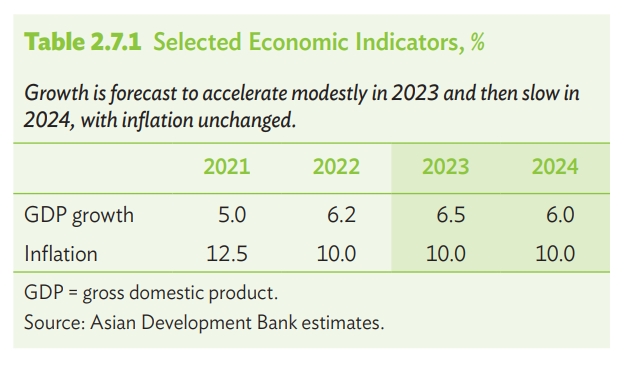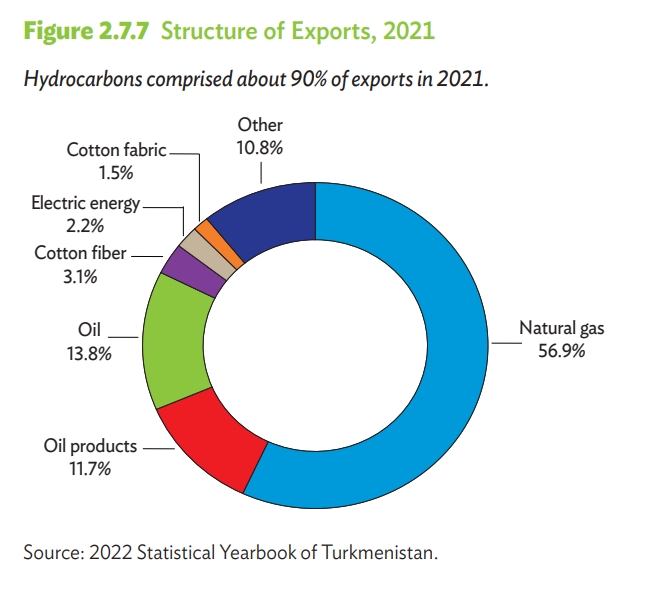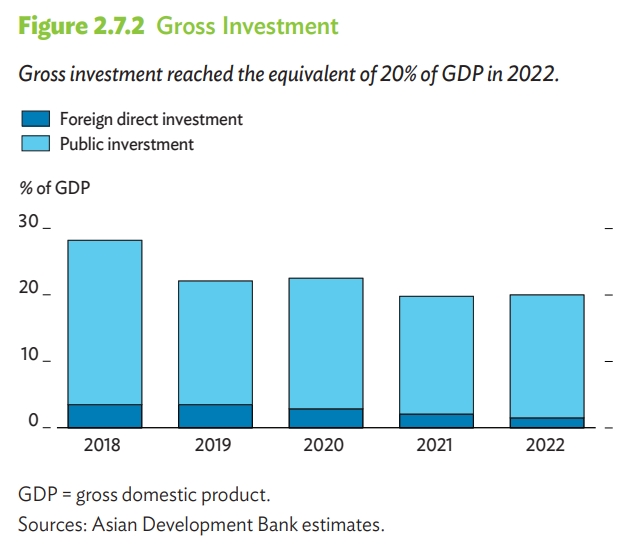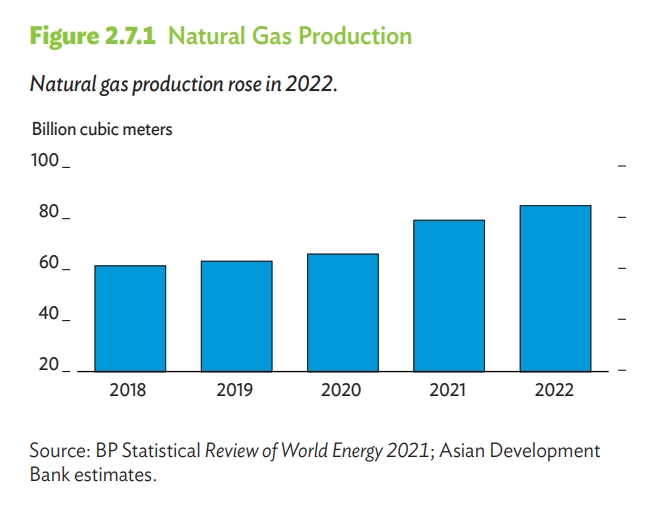Gains in hydrocarbon production and exports spurred economic recovery of Turkmenistan in 2022. Inflation remained in double digits, and the current account registered a large surplus. Growth will increase slightly in 2023 and moderate in 2024, says ADB’s flagship report’s April release – Asian Development Outlook (ADO).
Here are some excerpts from Asian Development Outlook April 2023, devoted to Turkmenistan:
According to the report, economic growth continues to come from both within and outside of the large hydrocarbon sector. According to the government, growth reached 6.2% in 2022, reflecting higher hydrocarbon exports and rising domestic demand following the end of a protracted lockdown that occurred in 2020 and 2021.
Expansion was spurred by the opening of borders, a gradual resumption of international flights, greater domestic mobility, increased trade, and revitalized services in 2022. Higher volumes of hydrocarbons, mainly natural gas, exported at higher prices added considerably to growth. Exports expanded mainly to satisfy demand from the People’s Republic of China (PRC) and, to a lesser extent, from Azerbaijan and Iran.
On the supply side, industry was reported to have expanded by 6.3%, particularly in hydrocarbons. After 20% growth in 2021, gas production expanded further by an estimated 7.2%. Higher output of crude oil, oil products, chemicals, and electricity, as well as improvements in manufacturing, food processing, textiles, and other items, including those produced under import-substitution schemes, all helped the industry grow.
Agriculture grew by 5.7% as targets for cotton and wheat production were achieved, and from expansion in horticulture production for domestic and foreign markets. Services expanded by 7.0% with the relaxation of restrictions on external and domestic transportation and enhanced activity, notably in trade and catering.
On the demand side, public investment and net exports were the main drivers of growth. Gross investment in various production facilities and social infrastructure under the President’s program for socioeconomic development in 2022–2028 increased notably to reach an estimated 20% of GDP in 2022.
The government reported commissioning during the year 76 production units and social facilities: new health centers, educational establishments, cultural centers, and, one of the largest projects in the provinces, the construction of Arkadag, a new administrative city. A program to provide affordable housing put into operation 1.5 million square meters of residential buildings in 2022. In addition, rural development programs invested in interregional highways, high-voltage electric transmission lines, and municipal infrastructure throughout the country.
The state budget reversed a deficit equal to 0.3% of GDP in 2021 with a 1.0% surplus.
The current account remained in surplus. The surplus equaled 6.0% of GDP in 2022, reflecting higher energy prices and export volumes as imports were restrained by controls. Export revenue is estimated to have risen by 43.6%, mainly on exports of gas to the PRC but also with additional exports to Iran and Azerbaijan under gas swap agreements.
Economic Prospects
The President’s socioeconomic development program for 2022-2028 aims to diversify the economy through private sector development, foster job creation, improve social conditions, narrow disparities between urban and rural areas, and transition to greener and more sustainable growth. Turkmenistan’s 2023 investment program calls for outlays of $10.7 billion, near 20% of GDP, with 55.6% of this sum allocated to constructing industrial facilities. and other infrastructure.
Projected higher revenue from hydrocarbon exports will keep the state budget near balance this year and next. However, most government investment projects are expected to continue being financed off budget.
Higher gas supplies are expected to keep export growth going in the coming years. Imports are expected to rise, supplying industrial inputs to export-oriented industries and consumer goods to the domestic market. The anticipated relaxation of import constraints is expected to reduce the current account surplus to 4.0% of GDP in 2023 and 3.4% in 2024. With scheduled debt amortization and the government’s aversion to new borrowing, external debt is expected to be minimal.
Fitch has upgraded its outlook for Turkmenistan to positive B+ from its earlier stable rating. This reflects the strengthening of fiscal and external balance sheets from higher prices for hydrocarbon exports and the country’s willingness to service and repay debts. Among the factors that could garner a further rating upgrade are improvements in governance standards and the business environment, a more consistent economic policy that reduces macroeconomic distortion, and greater data transparency. ///nCa, 5 April 2023
Here are some figures from the Report:



